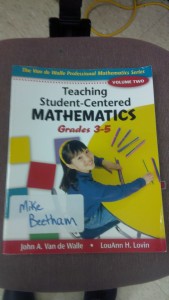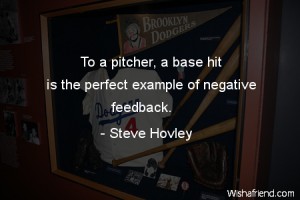Recently, during a discussion in an AQ course @ed_rego, we started talking about math scores and the effectiveness of Ontario’s public education system. Ed Rego mentioned Ontario and Canada’s success on the international front. Not only do Canadian students rank high on the international front, its public education system also makes a difference in students’ lives. Let’s look at some reveling data first.
1. Canada ranks high in international testing.
In my studies on education, I discovered how well Canada does on international test scores, especially in relation to the United States. The Organization for Economic Co-operation or OECD conducts yearly tests to rank countries based on performance in science, reading, mathematics (Program for International Student Assessment or PISA) and trends in international mathematics and science study (TIMSS) in both French and English. Students are randomly selected by age (15 year olds for PISA) or by grade level (Grades 4 and 8 for TIMSS).
In 2015, Canadian 15 year olds ranked 4th in science , reading, and mathematics among the PISA results tied with Finland. Singapore, Japan, and Estonia were the only countries to surpass us (Chinese countries include Taipei, Macao, Hong Kong, and B-S-J-G China) . The United Kingdom came in 10th place and the United States came in 20th place. The trends show Canada varies only slightly between testing years. Also note, in Canada, all 15 year old students, of all abilities, participate in our education system and thus would be possible participants in the PISA testing. Also note that Canada does not have weekend “Cram School” as part of our educational landscape. Cram School focuses on rote learning and not critical thinking. In addition, some countries stream students with learning challenges away from formal education. A breakdown of PISA 2015 results for specific provinces can be accessed below.
In 2015, Canadian students ranked 8th in grade 8 mathematics surpassed by Singapore, Korea, China Taipei, Hong Kong, Japan, Russia, and Kazakhstan. England ranked 10th and the United States ranked 11th. Norway students ranked 14th in mathematics. Finland scores were not listed. In science, Canadian students ranked 13th in grade 8 surpassed by Singapore, Japan, China Taipei, Korea, Slovenia, Hong Kong, Russia, England, Kazakhstan, Ireland, United States, and Hungary. Norway students ranked 18th in science. A breakdown of TIMSS 2015 results for specific provinces can be accessed below.
These PISA and TIMSS scores show strong results for both Canada and Ontario, particularly in light of the latest decrease in mathematics EQAO scores in 2017. From these results, I can conclude that Canada’s public education system does a very good job educating our students, even on an international level.
Note: I did not analyse the breakdown of grade 4 test scores as the introduction of specific Canadian curriculum differs in mathematics from other countries.
Canada’s 15-year-old students among best global performers in science, math
Breakdown of Canada’s PISA scores for 2015.
2015 mathematics TIMSS results
TIMSS 2015 Ontario result breakdown
2. Canada teaches students how to critically think and engage in rational discourse.
As Heather Mallick of the Toronto Star stated, our public education system teaches “to value thought over feeling, reason over passion” (Mallick, Toronto Star, November 12, 2016). Canadian teaches do not accept writing with statements without supporting details that come from credible sources. Teachers teach the difference between real news and false news.
3. Canadian public education socializes students.
All students, from all backgrounds (i.e. age, gender, cultural background, socio-economic status, or ability) participate in Canada’s public education system. Students are not segregated based on background, culture, or socio-economic status. Students all learn together. Teachers teach values of inclusion for all and education for all. Students learn to get along with others from many different backgrounds and many different places in the world. And this level of national inclusion, is one thing that makes me proud to be a Canadian citizen and a Canadian teacher.
Ontario’s Equity and Inclusive Education Strategy
4. Canada’s public education is equitable and democratic.
Canada’s public education system (almost) compensates for disadvantages that impact student learning. Canada’s public education system gives students from all background (due to age, gender, cultural background, socio-economic status, or ability), an opportunity to succeed in school. Newly-arrived immigrant students rapidly integrate enough to perform the same as their Canadian classmates. Dr. John Jerrim (UCL Institute of Education in London) stated that Canada’s high league table ranking reflects the narrow socio-economic gap in school results. The outcome is that Canada’s score show a very high average, with relatively little difference between advantaged and disadvantaged students. The OECD states that Canada supports social equity as “Schools should provide a good education for all students, regardless of their parents’ education or career. PISA assesses to what extent differences in education outcomes are associated with the social status of parents as well as the performance gap between advantaged and disadvantaged students. It also identifies the share of students who perform well, despite coming from disadvantaged backgrounds, known as resilient students.” (OECD, 2015)
How Canada became an education superpower
I end this blog with the words of John Dewey …
It is no accident that all democracies have put a high estimate upon education; that schooling has been their first care and enduring charge. Only through education can equality of opportunity be anything more than a phrase. Accidental inequalities of birth, wealth, and learning are always tending to restrict the opportunities of some as compared with those of others. Only free and continued education can counteract those forces which are always at work to restore, in however changed a form, feudal oligarchy. Democracy has to be born anew every generation, and education is its midwife. (Dewey, 1916, The Need of an Industrial Education in an Industrial Democracy)
Let’s celebrate Canada’s public education system success as a democratic and well educated nation – for I believe this is why we are one of the best places to live in the world.
Collaboratively Yours,
Deb Weston
This blog was inspired by an article written by Heather Mallick, Toronto Star, November 12, 2016.












